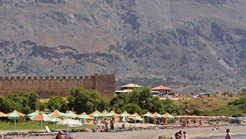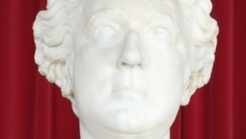

Greece
The Archaeological Museum Sitia began operating in 1984, one hundred years after the first excavations of the Italian Archaeological School. Largest and richest whole antiquities is considered to be the palace of Zakros were built with many and great findings, some of which are masterpieces of Minoan art.
The Archaeological Museum Sitia began operating in 1984, one hundred years after the first excavations of the Italian Archaeological School. Largest and richest whole antiquities is considered to be the palace of Zakros were built with many and great findings, some of which are masterpieces of Minoan art.
The museum is a complete unit, which has a storage and laboratory areas, offices for the scientific, administrative staff and small archaeological library. The findings cover a period about 4,000 years, from the late Neolithic to the late Roman Period and occur mainly in archeological excavations have revealed sets in areas.
Start the web browser is the vestibule, in the center of which exposed the famous ivory statue of the Minoan city of Paleokastro. Then set out the findings from the palace of Zakros were built and the area of: giant jars were, many decorative vessels and utensils, one could become with color decoration, artifacts miniaturisation.
Subsequently, presented findings from funerary sets of geometric and ancient tribal Sitia. Impressive is the sets of findings and Hellenistic Era Greek-Romain times in the fourth section of the Xirokambo, Ζiro, the banjo, the mansion of Long Megas Gialos, Kato Koufonisi etc.
The Archaeological Museum Sitia has arisen as a result of strenuous efforts of operators and the inhabitants of the region, with a view to accommodate the findings of province Sitia, a large part of which was transported to museums Agios Nikolaos and Heraklion.
The museum was opened in 1984.


Although Crete hosts one-quarter of Greece’s annual visitors, it’s still possible to escape the crowds by heading south. Thanks to the rugged mountains that stretch across much of the island’s spine, southern Crete remains a place apart.


FAIRY TALE MEETS DREAM-Every year, in the beginning of June, just before sunrise in the morning mist, around Frangokastello appear black-clad human-like shadows with swords and helmets, which head, on horse or on foot, close to the castle.


The house he lived in, where he wrote and died, after being destroyed by the WWII bombardments, was later restructured and still exists to this day. In Solomos’s house, the Company of Corfu Studies founded the Centre for Solomos Studies, which operates as “Solomos Museum”.
1039 Ε 6061 01515 00